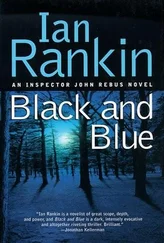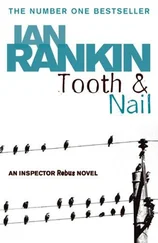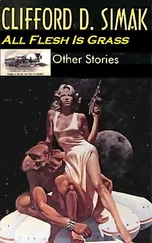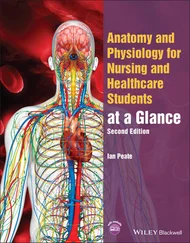In 1889 the Board of Agriculture was re-established, and in 1896, the classical experiments at Cockle Park, Northumberland, were initiated to demonstrate the value of basic slag as a source of phosphoric acid for the grass sward. Basic slag, superphosphate, and combinations of lime, slag, potash and nitrate of soda were under trial, the merit of the fertiliser being assessed by the liveweight increase of sheep which grazed the plots, or by the weight of hay. The outstanding treatment was an application of 10 cwt. per acre of basic slag as a first dressing, followed by 5 cwt. per acre every third year afterwards and this treatment was adopted by large numbers of farmers throughout the country. The effect of the slag was to so encourage the growth of wild white clover that the stock-carrying capacity of the grassland was increased threefold. Even to-day, it is quite common to find farmers using slag in these amounts.
By now attention was being given to the value of native strains of grasses in addition to wild white clover, and work at the North of Scotland College of Agriculture, and by Professor A. N. McAlpine at Glasgow, had indicated something of the potential of grass output when the right types of grasses were linked to wise fertilising. In 1919, Lord Milford, by a generous gift to the University College of Wales at Aberystwyth, brought into being the Welsh Plant Breeding Station which, under its director Professor R. G. Stapledon, was to make a far-reaching contribution to the realm of grassland husbandry in the production of leafy, indigenous strains of the principal grasses. Their names to-day carry the prefix “S” and are known throughout the world.
Other land-marks in the history of grassland in this country are the establishment of Jealott’s Hill Research Station in Berkshire by Imperial Chemical Industries in 1936, the formation of the British Grassland Society in 1945, and the opening of the Grassland Research Institute at Hurley in Berkshire in 1949, the first station to be devoted solely to fundamental research problems in the sphere of grassland husbandry.
Spectacular progress has been made in British agriculture during the past quarter-century. It has become much more productive, has reached a high level of technical efficiency and is probably the most highly mechanised in the world. The acute dangers of two world wars and their aftermath have indicated the vital national need to reduce the dependence of a very large industrial population upon imported food supplies.
The need for maximum self-sufficiency in terms of home-grown feeding-stuffs has placed greater and greater emphasis on the production of more and better grass and upon its more efficient utilisation by grazing and conservation. A greater cattle population has thus been maintained at a higher level of output of both milk and beef, and there has been a marked revival in the sheep industry.
CHAPTER 3THE GRASS PLANT AND ITS VALUE TO MAN

In this chapter I shall begin with a brief description of the various parts of a grass plant, emphasising the features that are of importance to agriculture. A fuller and more detailed account may be found in Dr. Hubbard’s excellent Penguin volume Grasses (1954).
To the non-botanist all grasses look very much like one another at first sight. On closer inspection, however, differences in habit and form of growth and particularly of inflorescence are very apparent. There are grasses which are Lilliputian in size, contrasting violently with the largest members of the family, the bamboos, bearing great masses of blooms on spikes or panicles a foot or more long. Grasses, too, display an immense capacity for adapting themselves to their environment, some making their home in water or along the banks of streams and rivers, while others survive the scorching heat of the desert and or the intense cold of the polar regions. Some grasses are annual and complete their life cycle in one year, such as the very common annual meadow grass ( Poa annua ). Others like the soft brome grass ( Bromus mollis ) are biennial, the seed germinating in late summer or autumn and the plant flowering and seeding the following year. Finally, there are vast numbers of perennials, like perennial ryegrass ( Lolium perenne ) and couch grass ( Agropyron repens ), which are potentially immortal, producing new shoots or new lengths of rhizomes for ever if conditions allow. A bamboo may survive for thirty or forty years or even longer. Unlike the annuals and biennials, which bear flower-heads on all or most of the shoots, in the perennials the flowering shoots are accompanied by vegetative shoots, the number of which depends upon the duration of the grass.
These vegetative and flowering shoots are not different in origin. Both shoots start off as a vegetative structure—a very short-jointed stem bearing two ranks of leaves, one leaf at each of its closely-spaced joints or nodes and arranged alternately along the stem, which is constantly producing new leaves at its tip; thus there is a continuous sequence of growth. As each leaf reaches full size the older ones die away, to be replaced by fresh leaves. Meanwhile the stem remains extremely short, but branching often takes place. Buds in the axils of the leaves grow out to form a new short-stemmed leafy shoot, and these in turn produce further shoots in the axils of their leaves, so that a dense tuft is quickly built up. This process of increase in the number of shoots, without any marked lengthening of the stem, is particularly noticeable in young cereal plants during the first few months of growth, and has been given the special name of “tillering,” each shoot being referred to as a “tiller.” Obviously tillering capacity in the cereals means that less seed per acre needs to be sown than would be the case were only a single shoot formed from each seed. If each tiller produced an ear to be harvested flowering would be spread over a long period, hence ripening would be very uneven and farming operations complicated; but the normal wheat-field is sown thickly so that only one or two of the earliest-formed tillers on each plant are able to flower, which ensures that all the ears of grain are ready for cutting at the same time. Pastures, on the other hand, produce more stock food since the grasses cover the ground more rapidly to form a sward or turf, and recover from mechanical damage comparatively quickly because of this characteristic.
A turf of vegetative shoots may be a foot or more in height, but it consists almost entirely of leaf. The stems are still extremely short and completely hidden, so that in a typically tufted grass at this stage of growth all the stems and buds are within about half an inch of the ground. It is only in exceptionally tall-growing grasses, such as the bamboos, that long, upright vegetative stems are produced at an early stage. In the case of creeping grasses there may be some elongated stems but these are horizontally directed and spread along or through the ground as stolons or rhizomes. By way of contrast, the lower internodes of some grasses may become swollen with plant food, and these grasses are known as “bulbous.”
This characteristic of the grasses—the growth-buds remaining close to the ground—determines their value as food for grazing animals. If an upright-growing plant, like kale or a young tree seedling, is grazed off to within an inch or two of the ground it will have lost the greater part of its stem, together with its apical bud and most of its axillary buds. It may recover by the development of new shoots from the base of the stem, but it is unlikely to survive many such grazings. In marked contrast to this a vegetative grass plant grazed
Читать дальше













